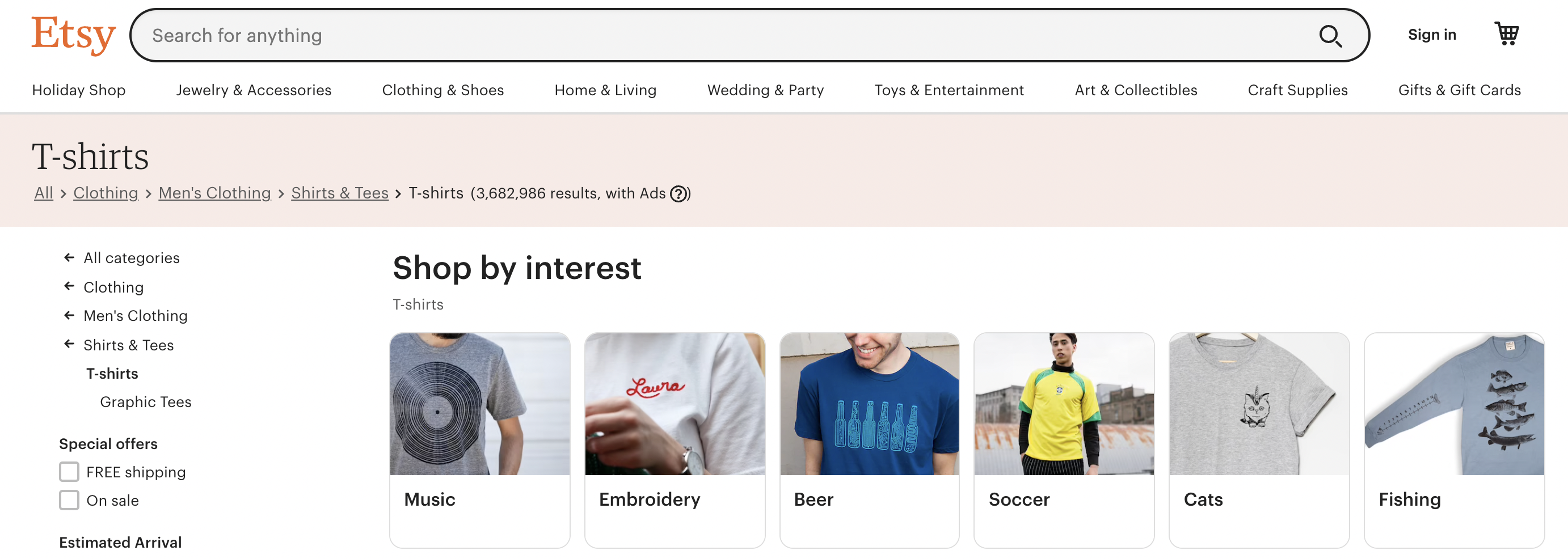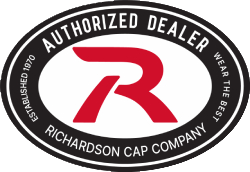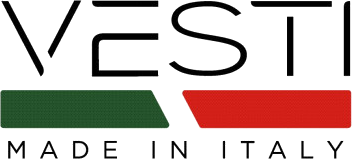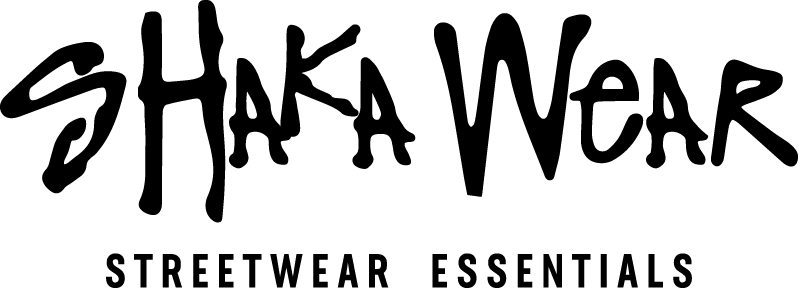Clothing Marketing Strategies for Selling on Etsy

Posted by AllDayShirts on to Printing Business Tips
Over the course of a decade-and-a-half, Etsy has entrenched itself as one of the premier online marketplaces for vendors with handmade, craft, and vintage goods. As of 2019, the website featured more than 2.5 million shops catering to a userbase of over 45.7 million paying customers. Any entrepreneurs interested in selling customized t-shirts can find a potentially massive audience there. The focus on original products, rather than resales of bulk items, should make it especially appealing.

So you got your Etsy storefront up and running and your friends and family can finally buy your products. Now, how do you take it to the next level and win over people unfamiliar with you or your products? How do you convince customers to buy from you rather than the next Etsy store? It all comes down to your marketing strategies. Ideally, you should take a variety of approaches for appealing to your target audience, ranging from developing a unique brand to spreading the word.
Designing a Brand
Your business has a store, and it has a brand. The former consists of the shopping software, the sitemap, and all your product listings, elements, and features. The latter is the presentation of the store: its identity, its aesthetic, its voice, and so on. It is everything that makes your shop stand out from others, everything that keeps it from being generic. Much of your marketing depends on and helps to build a consistent brand that your target audience will find appealing. You must take just as much care in designing the brand as you do in designing your clothing products.
Brand Name
Choosing a memorable and natural shop name is necessary. With 2.5 million stores on the marketplace, you want to make your moniker stick out from the rest. Choosing the name that everyone will use for your store can seem like a daunting task, but it can be much easier than you would presume. If you are stumped for ideas, here is a list of simple methods you can apply to name your shop.
- Descriptive Names: Start with a vivid word that aligns with the theme you plan to offer with your t-shirts (for example: Modern, Urban, Comfort, Chic). Then, follow it with a word that literally represents what you sell (for example: Chic Comfortwear, The Modern Stylist, and Urban Tees).
- Abstract Names: Try to get your artistic juices flowing by coupling two words together to coin your store’s name. Of all the methods in this list, this one may be the most difficult to do, and be happy with. Thankfully, the rewards may be worth it. Coming up with a fully unique name can work wonders for your online store because customers can easily search for it on Google. If your site’s name is original, then there will not be any sites with comparable names to dirty the search feed. Examples include Teerific, Shirtisfaction, and Jacketastic.
- Use Your Own Name: Putting your name in your brand is another way to make the business readily accessible in a Google search. Moreover, it allows for you to be recognized for each product you make and sell! The sole downside to this choice is that some customers may not know what you sell from the name alone. Even that issue can be resolved with a little cleverness. Examples include Kathy’s Boutique, Mike’s Closet, and Kate Spade.
Cover Photo and Logo
Branding is more than a catchy and memorable name. It also encompasses the aesthetic of your Etsy page. A few distinct visual design elements create that aesthetic, and they can be enough to attract shoppers or turn them away. T-shirt makers should know the value of a good look more than most other types of vendors. You need to give your best effort when creating and choosing the images for the following three elements:
- Cover Photo: the image that spans across the top of your storefronts homepage, known also as a banner. Selecting a vibrant and professional image is important, as it is typically the first thing a customer would see when looking at your shop.
- To add a cover photo to your shop, sign into Etsy, go to the Shop Manager tab under Sales Channels, and click Add a Cover Photo. The minimum size is 1200 x 300 pixels, though Etsy recommends the banner to be 3360 x 840 pixels to ensure clarity.
- Shop Icon: the image that appears underneath the cover photo. You normally display your main logo in this space. Making a professional-looking logo that also represents your company’s market is essential because it will be everywhere on your products if you choose to brand. Make sure it is something you and your customers will enjoy and want on their clothes.
- To design your Etsy shop icon, sign in to your account, go to your Shop Manager tab, and click the pencil icon located next to the shop name under Sales Channels. Locate and select the camera icon next to the shop illustration, select your file, and save changes.
- Profile Photo: the image that shows on the right of your shop. This one is typically a picture of yourself! To make it look professional, you make want to shoot the image from the waist or chest up. Unless the company is co-owned, you should be the only person in the profile photo. As a t-shirt seller, “dressing for success” means proudly wearing a shirt that you made. Our last tip is that a good profile photo can make a difference.
- To add or change your profile picture sign into your Etsy account, Click You, and then click Account Settings and Public Profile. Select Browse or Choose File, pick your favorite photo of yourself, and select Save Changes.
Categorize Your Products
An essential way to boost the traffic through your page and increase sales is by categorizing your products in a way that your customers will understand. If you know half of your patrons buy short sleeve t-shirts and the other half buys sleeveless tops, make main categories for both and then add subcategories for different types. Having an organized site shows shoppers that you take your Etsy store seriously. It can also increase customer confidence in your products and help visitors find what they want with ease.
Social Media
Once you have the essential parts of your store and brand, head onto Facebook, Instagram, and Twitter, and make an account for your brand. Whenever you add more shirts to your shop, post a picture of your product and give your followers a small discount with a coupon code! Social media is also a great way to advertise your brand, when you have made enough revenue, purchase an ad or two from Facebook to build your customer base.
- Christmas Fun Starts with Custom Hoodies & Crewnecks Using DTF Printing
- Thanksgiving DTF Apparel: Create Cozy, Colorful, and Custom Looks This Holiday Season
- Halloween DTF Apparel: Create Spooky Custom Looks with Jerzees 562 and 996 from AllDayShirts.com
- The Ultimate Guide to Soft Style Gildan Fleece: Comfort, Style, and Value for Every Wardrobe
- Why Acrylic Beanies Are a Unique Challenge
- Jerzees Fleece: The Perfect Blend of Comfort, Style, and Value
- Back-to-School DTF Printing: The Ultimate Guide to Custom Apparel for Students and Schools
- Image Enhancer for DTF Printing: How to Unlock Sharper, Brighter, and More Professional Prints
- How to Apply UV DTF: The Complete Step-by-Step Guide
- Introducing Print-on-Demand Hats: Featuring the Richardson 112, Otto 5-Panel Mid Profile Cap & High Crown Mesh Back Trucker



























